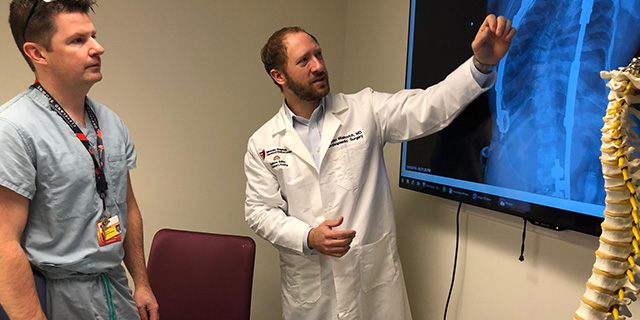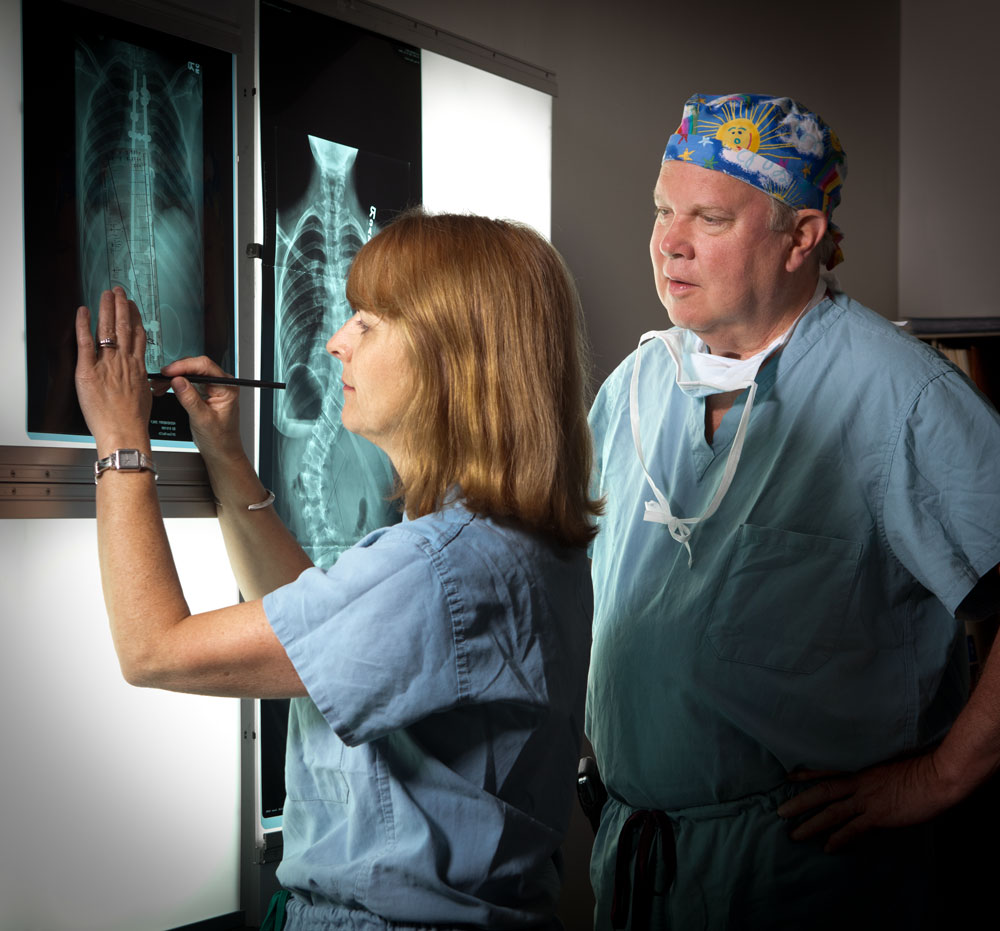Scoliosis Research
 The scoliosis database housed within University Hospitals Rainbow Babies & Children’s serves as a valuable resource for both scientific research and clinical care. By collecting and analyzing data on patients with scoliosis, the database enables healthcare providers to:
The scoliosis database housed within University Hospitals Rainbow Babies & Children’s serves as a valuable resource for both scientific research and clinical care. By collecting and analyzing data on patients with scoliosis, the database enables healthcare providers to:
- Identify trends and patterns: Recognizing recurring themes in patient data can help to identify risk factors, potential complications and effective treatment strategies.
- Track treatment outcomes: By following patients over time, the database can measure the success of various treatment options, including surgery, bracing and observation.
- Improve patient care: The insights gained from the database can be used to refine treatment protocols, develop new treatment approaches and provide more personalized care to patients with scoliosis.
- Advance scientific knowledge: The database can be used to conduct research studies that contribute to a better understanding of scoliosis, its causes, and its progression.
UH Rainbow Babies & Children’s has a long-established database to track outcomes and trends for pediatric orthopaedic patients with spinal deformities. It is the largest pediatric orthopaedic spine database in a single institution in the United States, cataloguing information on over 3,000 patients, 20,000 evaluations and every patient diagnosed with a spinal deformity surgery at UH Rainbow since 1992. The extensive database serves as the foundation of pediatric orthopaedic surgery spine research and is used by our surgeons seeking to find answers to specific questions.
 Connie Poe-Kochert, RN, CNP, worked to establish the database in 1995. Since then, research resulting from the database has appeared in every major pediatric orthopaedic publication and presented extensively at national and international orthopaedic and pediatric meetings, in addition to Grand Rounds.
Connie Poe-Kochert, RN, CNP, worked to establish the database in 1995. Since then, research resulting from the database has appeared in every major pediatric orthopaedic publication and presented extensively at national and international orthopaedic and pediatric meetings, in addition to Grand Rounds.
Throughout the years, our physician and research team has met and worked with thousands of families from Northeast Ohio and beyond to gain a better understanding of the condition. UH Rainbow Babies & Children’s providers become an intimate part of these families since scoliosis identified at an early age and some patients are followed well beyond their adolescent years.
Our research has studied and answered many important clinical questions to determine if a spinal fusion is the last procedure in the series of lengthening procedures used to treat early onset scoliosis. This was a commonly held belief among the pediatric spinal surgeons until information in our database indicated that 20 percent of patients who underwent spinal fusions required further surgical interventions. The use of our database also helped identify non-surgical approaches for pain management in scoliosis patients. According to database research, pain in scoliosis patients is better managed with intrathecal morphine, which has become the standard of care at UH Rainbow Babies & Children’s and many other major pediatric spine programs in North America.


